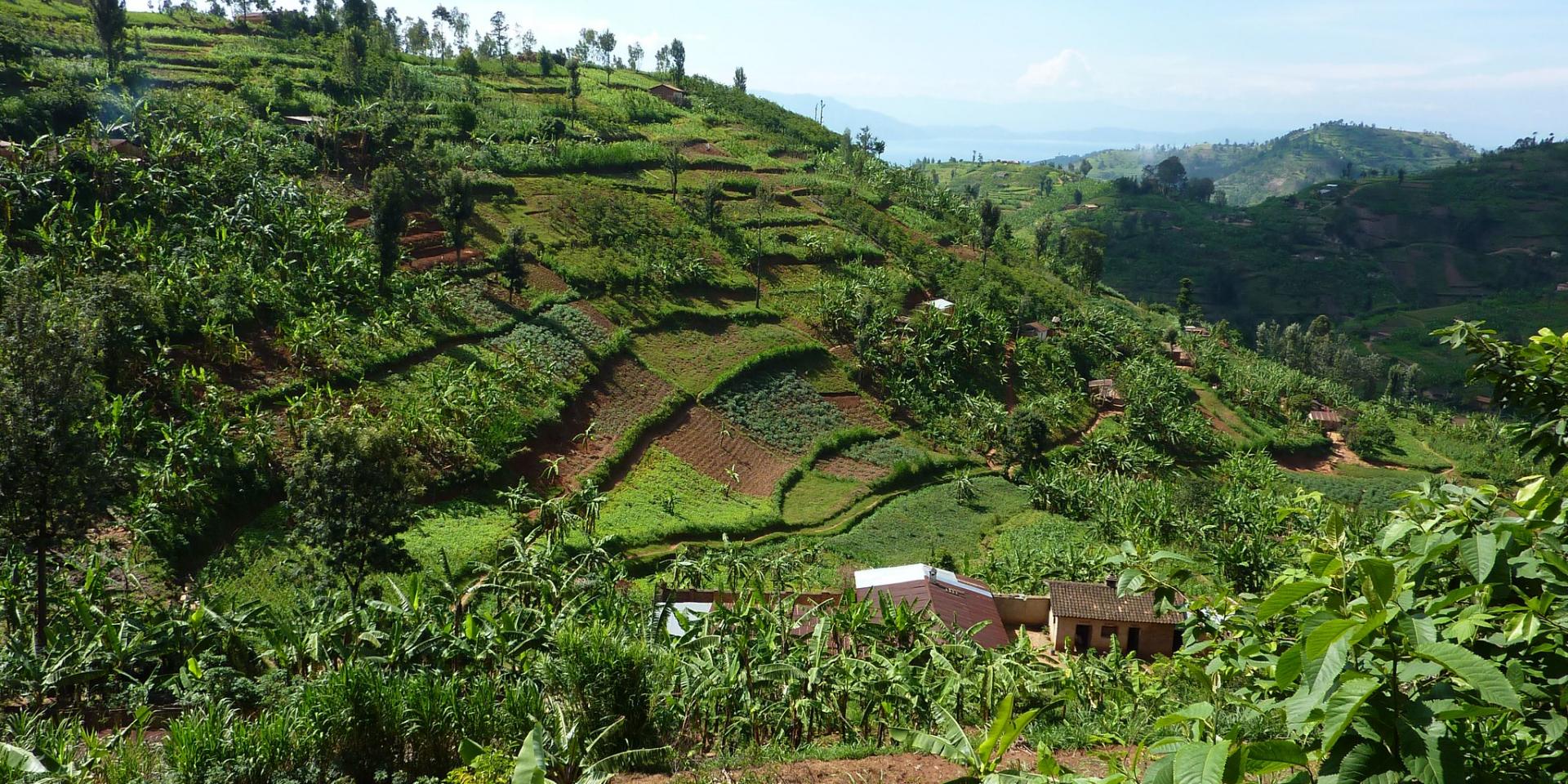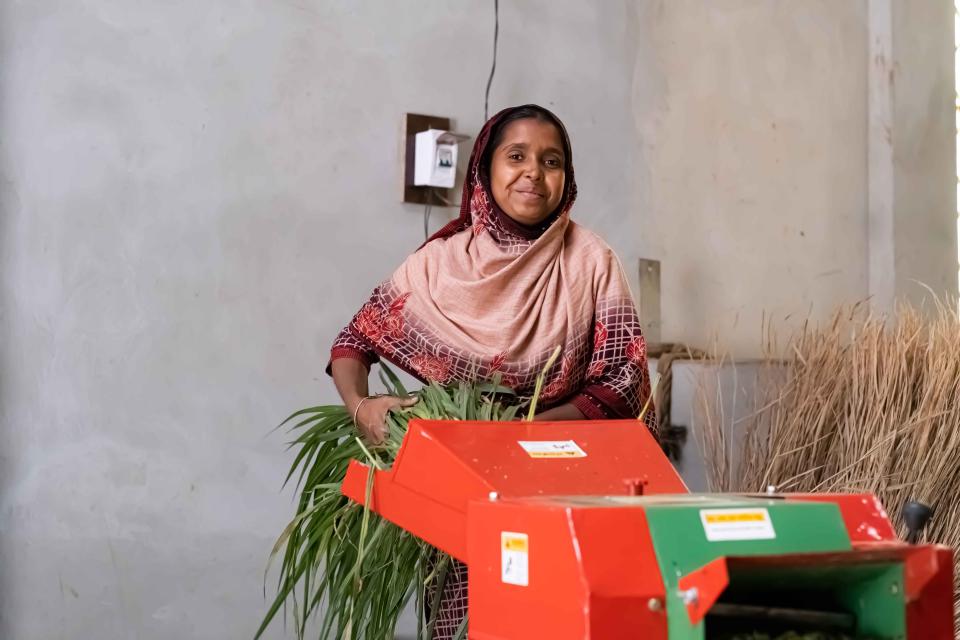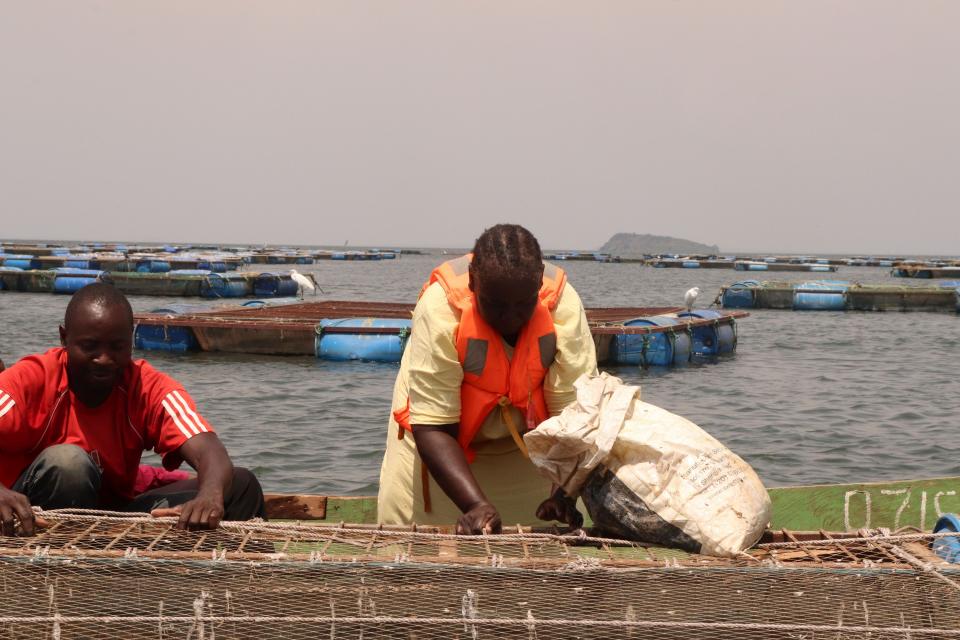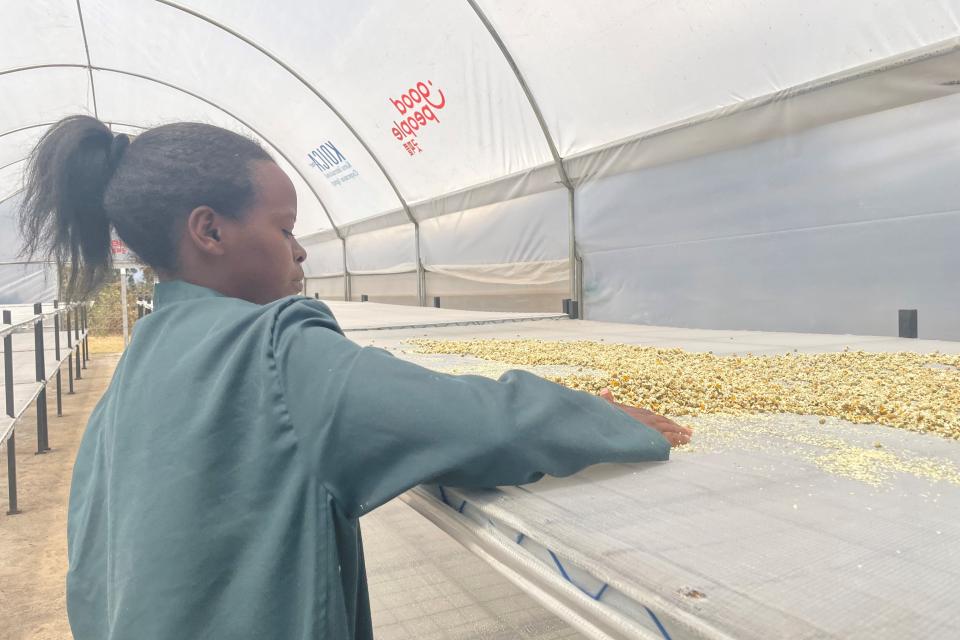Irrigation uptake seen closing gender inequalities in Rwanda

In early 2023, the CGIAR GENDER Impact Platform ran a series of virtual training modules for science communicators on how to develop and pitch stories on agricultural technologies that work for women.
The story below was produced by Esther Tumuhairwe and originally published by Rwanda Post as a result of this training. Enjoy!
Vivian Mugatazi, a woman in Rwanda’s Eastern Kirehe District speaks with emotion about how a newly acquired irrigation machine gave her ability to get involved in planning of family finances and goals setting.
For many years, this had not been possible, like is the case for many rural women farmers in the area, hence positioning men to have upper hand in what's done in families in the drought-prone rural community.
Women here grappled with limited participation in agriculture due to, among other things, constraints faced when it comes to partaking in intensive crop production and irrigation especially during the dry season.
All they could do is keeping small gardens around homes where they could plant things like vegetables for the family in the rainy season – which would be manageable in the changing weather and need less efforts to irrigate.
In turn, women had little to no voice in their homes since their male counterparts effectively became the sole contributors to the family’s finances, and therefore made all the decisions – disregarding even their small support.

Photo: Esther Tumuhairwe.
Seen changing
However, the trend has been changing thanks to the initiative that supported Mrs. Mugatazi and other women in the area to participate in irrigated farming, effectively allowing her to make a contribution to their respective families’ overall financial growth.
“If I were to die today, I know that I am not leaving him with nothing,” says Mrs. Mugatazi, speaking of her autistic 17-year-old son who has not been able to go through school.
Both access to water sources and irrigation equipment increased Mugatazi's capacity to actively engage in agriculture production year in year out.
She plants tomatoes, carrots, cabbages interchangeably in seasons, and equally benefited from participating in group training that taught her to make fertilizer for her gardens.
“We now plant, sell our produce and have personal money to save and invest. We have overcome the stigma to take up leadership opportunities in the community. In fact, I am going to stand as a village leader in the next elections,” she added.
Changes in Mugatazi’s life and that of her peers are so far key highlights of achievements of the Irish Aid Funded Market Oriented Livelihood (PGII), a project that closed a year ago having reached out to over 80 women in six rural Districts of Rwanda, namely Kirehe, Gicumbi, Gakenke, Rulindo, Muhanga and Nyamagabe.
Implemented jointly by Young Women’s Christian Association (YWCA) Rwanda and OXFAM, the project eased access to irrigation kits by rural women farmers to boost their incomes, while at the same time offering training to equip them with awareness regarding gender-based violence.
In Rwanda’s past, men had been the people most involved in agriculture since they had more access to land and resources as compared to their female counterparts.
However, Rwanda has taken significant steps forward in ensuring gender equality, which has seen women climb to positions of equal opportunity as men in decision making positions and across key sectors of the economy.
This did not immediately address constraints faced by women in agriculture, especially in arid rural parts of the country like Kirehe where farming requires shift from reliance on rains to some technology such as using irrigation machines.
Without support, acquisition and maintenance of irrigation equipment could not be afforded by majority of rural smallholder farmers, and especially women due to the cost constraints, as well as the fact that women were already marginalized due to limited empowerment in a wide range of aspects.
“Our contribution to family finances was too small, and we had no voice on how the family finances were used. You would come back when your husband has sold the produce but could not ask about the money received and how it will be used,” said Clementine Tuyishime, one of the project beneficiaries.
Surplus produce
Mrs. Tuyishime also derives income from growing vegetables ranging from cabbages, tomatoes to green pepper all year round since access to irrigation systems have her worried less about effects of drought in the area.
This has seen beneficiaries' seasonal production rise by about 80 per cent and, in turn, boosted their financial abilities.
They produce more than enough to sell a portion of the harvest to the markets, getting incomes to cater for children’s school necessities, buy food items they don’t produce and using the rest to contribute to bigger projects like building or maintaining their houses.
“I can now get credit of even Rwf200,000 ($200) and furnish my house or tend to an urgent personal need because the creditor knows I have a big garden of vegetables which can act as collateral and that guarantees that I will pay,” Tuyishime said.
--
Disclaimer: This story has not been reviewed by the CGIAR GENDER Impact Platform; the views expressed here are those of the author(s) and do not necessarily reflect the views of the Platform.


